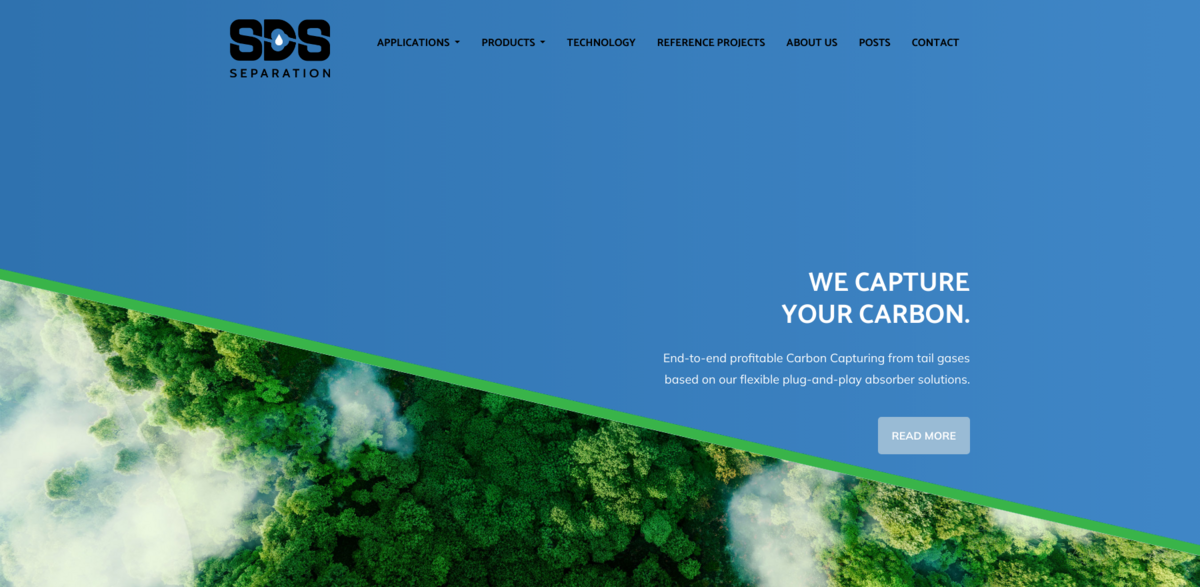What the Project Is
SDS Separation’s innovative project is all about capturing carbon in a compact, plug‐and‐play unit that transforms the way industrial emissions are managed. The project focuses on end‐to‐end profitable carbon capturing from tail gases using flexible absorber solutions. It leverages the power of the RotaScrub® and RotaStrip® systems to efficiently capture CO₂, liquefy it, and facilitate its transportation, reuse, or storage – all packaged in a modular design that is a refreshing departure from conventional bulky installations. The unit is designed to seamlessly attach to chimneys emitting CO₂‐laden gases, ensuring minimal interruption to existing processes while delivering impressive reduction capabilities.
Main Benefits
Key performance figures and benefits highlight why this technology is drawing so much interest:
- Compact design: The unit dimensions reduce typical heights from 35–40 meters to just 2–5 meters, along with up to 70% lower weight.
- Efficiency boost: Superior scrubbing efficiency achieved by the RotaScrub® and RotaStrip® combination, including a 30% reduction in amine flow.
- Economic gains: Realizes a 20–25% lower CAPEX and 20–30% lower OPEX compared to conventional installations.
- Mobility: A small footprint enables easy relocation between different point sources, making it highly adaptable.
- CO₂ quality: Captured CO₂ can be purified to food grade, industrial grade, or other required specifications for further use.
Versatile Carbon Capture Solutions
At the heart of this project lies the versatility in addressing the challenges of CO₂ emissions. The SDS Separation solution is designed with a full-service approach to carbon capture – from capturing the gas to liquefaction and onward transportation to designated storage or usage spots. The technology is engineered to work efficiently under conditions like a 12% CO₂ flue gas at 40°C with a 95% absorption efficiency, ensuring that even industries with stringent emissions standards can see substantial benefits. In a way, it’s a dynamic mix of technical brilliance and practical design that caters to varied process flows in industries from food processing and ceramics to packaging and paper manufacturing.
Efficient Capture & Onsite Processing
Not only does the project focus on capturing carbon, but it also takes care of what happens next. Once the CO₂ is captured, it can be reused on-site or transported for further application via gas pipelines, regular truck hauls, or even barge shipments. The system facilitates the liquefaction of CO₂ right on-site, ensuring that storage vessels are readily filled and transportation streamlined. The strategy of on-site purification makes it possible to achieve the high-quality specifications needed for industrial usage, ensuring that every gram of captured CO₂ is effectively reintegrated into a valuable process. This on-site processing capability brings operational flexibility and energy efficiency into sharper focus.
Tailored Solutions for Industrial Applications
The project is not just a one-size-fits-all solution. It is specifically tuned to enhance industrial processes across various sectors. Industries such as chemicals, pharmaceuticals, food, and waste processing are set to benefit significantly because traditional separation techniques tend to be large, expensive, and inflexible. This modular system, benefiting from continuous research and development, drives down operational costs while enhancing yields. For instance, in the methanol production industry, even a small efficiency improvement of 0.1% can translate into an extra yield of over a million Euros with a payback period of less than 0.5 years. Such economic benefits illustrate how innovative separation technology can simultaneously deliver cost savings and reduce harmful emissions.
Innovative Engineering and Economic Gains
The engineering behind SDS Separation is not only innovative but also economically smart. By combining robust capture techniques with a lean footprint, the solution sets new benchmarks in efficiency. In a very natural and almost conversational way, the project speaks to industries that are constantly on the lookout for ways to boost yield and reduce production costs. For instance, SDS?-Scrubbers & Separators have been shown to increase the yield of methanol, ammonia, and urea production while reducing emissions of harmful gases such as CO₂, SO₂, H₂S, and NH₃, as well as tiny particles like CO and metal oxides. This unique separation technology makes it possible to realize cost savings and achieve emission targets at around half the cost of conventional techniques… a real game changer in industrial processing.
Project Impact on Sustainable Development
- SDG 7: Affordable and Clean Energy
- SDG 9: Industry, Innovation and Infrastructure
- SDG 12: Responsible Consumption and Production
- SDG 13: Climate Action
- SDG 17: Partnerships for the Goals
Future Perspectives and Integrated Solutions
Looking ahead, the project promises a future where industrial processes are more sustainable and economically viable. The plug-and-play nature of the technology means faster integration and less downtime during installation, while strategic partnerships with CO₂ transporters and off-takers ensure that captured CO₂ is efficiently converted into a resource. Continuous innovation in modular design and performance means that industries can progressively upgrade their plants to meet tighter environmental standards with minimal disruptions. With flexible production capacities – from 2 to 100 kTon/year – the project can cater to small scale operations as well as major industrial complexes. In short, this is not just a technological upgrade; it is a paradigm shift in how industrial emissions are managed, offering a tangible pathway towards a low-carbon, responsible industrial future. The natural interplay of engineering prowess and economic insight makes the solution both practical and visionary, setting a dynamic stage for future developments in the field.





















